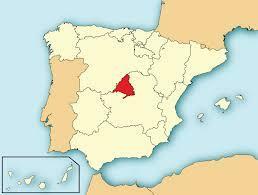Why Madrid is the capital of Spain

State capitals are an important part of the countries, since in these cities a large part of the power of the states is usually concentrated. Country capitals can change over the years, when strong political or social change occurs. In the case of Spain, the capital has been Madrid since the 16th century, and that is why today in this lesson from a PROFESSOR we are going to talk about Why is Madrid the capital of Spain?
Madrid was named the capital of Spain by King Felipe II in 1561. Until that moment the capital of the kingdom had been itinerant, that is, the capital was in the city where the court of the king, which made many cities the center of kingdom politics for a short period of time. weather.
The king's decision was quite controversial, as the nobles did not consider turning Madrid into a capital as a good idea. It is said that not even the father of Felipe II agreed with the decision, since the monarch thought that the best options as a capital were Lisbon or Toledo, two cities much more important than Madrid at the time.
The capital before Madrid had been Toledo, in which the court had been maintained throughout a reign. Toledo was a very important city for the Crown of Castile, and for that reason over the centuries it had been used as a capital, for a greater or lesser time, by almost all the Castilian kings. It was considered the historical capital of the Visigothic kingdom and also a kind of religious capital of the kingdom.
But the cold climate of Toledo and his situation on a high ground, which made messaging between the king and his servants difficult, made the Castilian city disliked by Felipe II.
In this other lesson we will discover the provinces and capitals of Spain.

To continue with this lesson on why Madrid is the capital of Spain we must talk about the different reasons that led Felipe II to name Madrid as the capital of his kingdom.
The reasons are numerous, since numerous historians have carried out studies on the motivations that Philip II had to change the capital of the city. Some of the reasons are as follows:
- His central position in the Iberian Peninsula and in the Kingdom of Castile. It must be taken into account that this circumstance had already caused numerous Courts to be convened in the city before its election as capital. That Portugal will be part of the Spanish Empire at this time was an important factor, since when expanding throughout the Peninsula, the most logical thing was to place the capital in the center of it.
- The city water, much more abundant than in the other cities that could have hosted the capital, thanks to the Manzanares and the city's wells. In addition, the water of Madrid was well known for its high quality, already at that time. The climate was also very comfortable, and the air was very clean.
- The existence of one of the greatest fortresses in all of Castile, the Real Alcazar of Madrid.
- The little power that the nobility and clergy possessed in the city. In Madrid there was no bishopric, since it was dependent on that of Toledo, and therefore clerical power was minimal. There were also no nobles in the village, the closest being the Mendoza from Guadalajara and those of Manzanares.
- The existence of the Cottage, a property of the royalty that was near the Real Alcázar of Madrid.
- The love of the king's wife, Elizabeth of Valois, through the city of Madrid. The queen adored the Madrid climate, and she hated the city of Toledo, with a much harsher climate.
Since Felipe II located the capital in Madrid there have been other cities that have monopolized the state capital for a very short time. These capital changes responded to certain historical facts or to designs of other monarchs after Felipe II.
These cities are the following:
- Valladolid: Capital of Spain from 1601 to 1606. It was located as capital by Felipe II, during the validation of the Duke of Lerma, although it was soon replaced by Madrid as capital.
- Seville: The royal family stayed in the Andalusian city from 1729 to 1733, during the reign of Felipe V.
- Cadiz: Along with Seville, it was one of the cities that hosted the capital during the Spanish War of Independence, hosting the Cortes that the Spanish summoned during this difficult period.
- Quotation marks: It was the capital for just one day, on September 15, 1881. This fact was due to the holding of a Congress of Ministers in the city.
- Other cities like Valencia, Barcelona or Girona were capital during the Spanish Civil War, when the government of the Republic had to move on numerous occasions due to the conflict.



